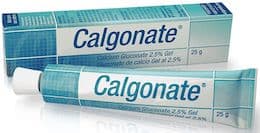
Curated with aloha by
Ted Mooney, P.E. RET

The authoritative public forum
for Metal Finishing 1989-2025

-----
Pitting in acid tin plating -- Problems & solutions
[editor appended this entry to this thread which already addresses it in lieu of spawning a duplicative thread]
Q. We have acid tin bath; parts come out pitted.

Popatbhai B. Patel
electroplating consultant - Roseville, Michigan
May 3, 2024
A. Hi Popat.
We added your question to a thread on the causes of pitting in acid tin plating. Please read the responses, and then follow up with corresponding detail. If you have a photo you can e-mail to mooney@finishing.com it will help.
Luck & Regards,

Ted Mooney, P.E. RET
Striving to live Aloha
finishing.com - Pine Beach, New Jersey
⇩ Related postings, oldest first ⇩
Q. We are processing components with 75 microns of tin from an acid bath and experiencing pitting in HCD areas. Our suppliers tell us that the solution is OK and should not pit. Has anyone had similar problems and any solutions to the problem.

Bob Lynch
plating company - Sydney, Australia
1999
A. You didn't mention if this was a bright tin plating bath or not. However, if it is, there are two things that come to mind; One pitting problem specifically occurred in HCD areas and turned out to be related to the agitation in the bath. We were using mechanical agitation from the work bar and it was evidently insufficient by itself. The in-tank filter pump in the tank had not been working and unfortunately it had not been noticed by the operator. When it was repaired and there was vigorous circulation of the solution as well as the work bar movement, the pitting in the HCD areas disappeared. The other was a series of what looked like pitting problems, however when viewed under magnification, the pits actually looked like fish-eyes as in paint. That turned out to be a lack of wetting agent. That was over the entire surface including LCD areas.
Ward Barcafer, CEFaerospace - Wichita, Kansas
Pitting of 12L14 after tin plating
Q. I am having a problem with pitting of 12L14 after tin plating.
Stephen Gallen- Glenolden, Pennsylvania, USA
2002
? More information is required, like what is the exact question? with details!
James Watts- Navarre, Florida
A. Stephen, 12L14 is a free machining steel- it has controlled amounts of 'dirt' in the steel to aid machining, in that the chips break easier. This 'dirt' will likely give you fits should you want to put a pit-free thin coating on the part. Make sure your coater knows the material- perhaps they can do some additional preparation or put on a thicker coating.
Good luck!

Lee Gearhart
metallurgist - E. Aurora, New York
A. 12LXX is a "leaded steel" and little flakes of lead can be seen on the surface with a magnifying glass. Lead forms insoluble salts with sulphates, chlorides and many other acids, however, lead does not form an insoluble with Fluoboric Acid, therefore skip the sulphate acid salts, skip the sulfuric acid, skip the Hydrochloric acid and run your parts through 30%/vol Fluoboric Acid before plating.

Never use HF anywhere unless trained!
If you do, you MUST have the antidote gel on hand for instant use!
Calcium Gluconate
for HF acid burns

on eBay or
Amazon
(affil links)

Robert H Probert
Robert H Probert Technical Services
Garner, North Carolina

Q. How to stop hydrogen pitting in tin plating
Hi, I am working on bright tin plating. However, my deposit always has hydrogen pitting, and I tried to lower the wetter but I could not remove those pits. I appreciate any help provided.
Thanks
product designer - NY, USA
August 12, 2009
A. Hi, Bryne. If you have tried agitation and wetter and the pits remain, I would suspect the parts are not fully clean and tiny spots of organics are precipitating the hydrogen generation.
Regards,

Ted Mooney, P.E.
Striving to live Aloha
finishing.com - Pine Beach, New Jersey
|
|
A. The proper amount of wetting agent, stronger agitation, cleaner parts that do not have micro pits in the surface, and it will not pit. Find the problem and fix it. James Watts- Navarre, Florida Q. Thanks for the advice. I have tried increasing the wetter and agitation speed, and I am pretty sure that parts and HC panel used are clean. However, the pits remain. Raising temperature can remove them, but this is for electroplating bright tin, nobody works above room temperature. I am not sure that whether it is additive related, or just some particular components. I am wondering whether there is any anti-pitter used in tin electroplating. Thanks for any advice. Bryne Wang [returning]product designer - NY, USA [returning] August 13, 2009 |
Q. To any one who like to help,
Hi, My name is Bryne, I am working on bright tin electroplating process development. My Hull cell panels always have pitting in the hight current density area. I have tried increasing surfactant level and agitation speed, but the pits remain. My Hull cell panels are cleaned pretty well each time before plating. I really do know how to solve this issue. Any advise or help are greatly appreciated.
product designer - NY, USA
August 14, 2009
A. Read James Watts' reply again. He has told you everything you need to know. On a Hull Cell panel, you may have excessive current density at the high end, higher than you will see on actual plated parts.

Jeffrey Holmes, CEF
Spartanburg, South Carolina
Tip: Readers want to learn from Your Situation 🙂
(little can be learned from abstract questions, so many readers skip them)
Q. Please suggest causes & remedies of pitting marks in Electrolytic tinplate
J. Maharana Maharana- Gandhidham, Gujarat, India
January 11, 2012
? Hi, Maharana.
What kind of steel (for example, leaded causes problems) ... what kind of tin process (sulfate, MSA, stannate) ... what kind of pits (hemispherical gas pits, fretting pits -- a picture will help!) A recent problem, or the line is just starting up for the first time> Thanks!
It may be more effective to mention your own parameters and to fully describe the particular problem you are having than to ask for a list of all possible causes of all kinds of pits ... but besides reading the suggestions on this page, you might also consider thread 16734, "Chloride contamination of acid tin plating bath"
Thanks.
Regards,

Ted Mooney, P.E.
Striving to live Aloha
finishing.com - Pine Beach, New Jersey
Q, A, or Comment on THIS thread -or- Start a NEW Thread

